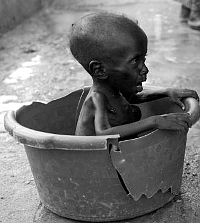
Poverty is the lack of adequate resources to be able to provide the basic needs of food, water, clothing, housing, medical care, and education.
Federal Poverty Level: A system developed in the 1960s to define poverty by measuring the cost of certain food items and multiplying the total by 3, because in the 1960s a family’s food budget was approximately a third of total expenses.
Absolute Poverty Line: The threshold below which one is considered to be lacking the financial resources to meet basic needs.
Relative Poverty: The level at which an individual has significantly less access to income and wealth than others in the same society.
EU and OECD Poverty Level: The Organization for Economic Co-Operation and Development (OECD) and the European Union define poverty as a relative poverty measure, with a definition that poverty is an income below 60% of the national median equalized disposable income. In 2009, for the US under this method the poverty level would be under $42,212.
Living Wage: A wage that adequately covers basic needs taking into account cost of living by area of residence. To calculate the living wage in your area, click here.
Middle Class: There is no definition.
Poverty risk factors:
Financially devastating bumps in the road for those without assets or adequate income:
How to reduce risk of poverty:
|
Characteristics of poor countries:
Social issues tied to poverty:
Leading causes of poverty:
|